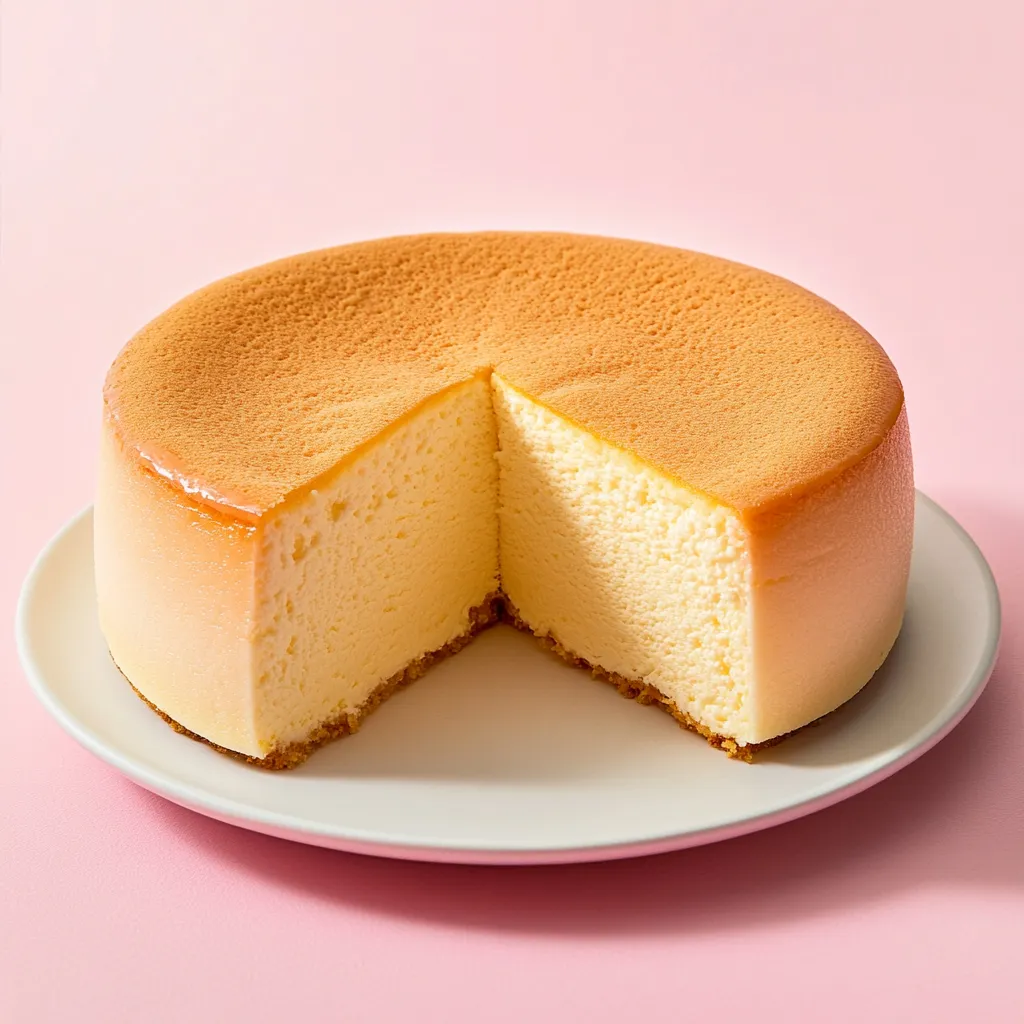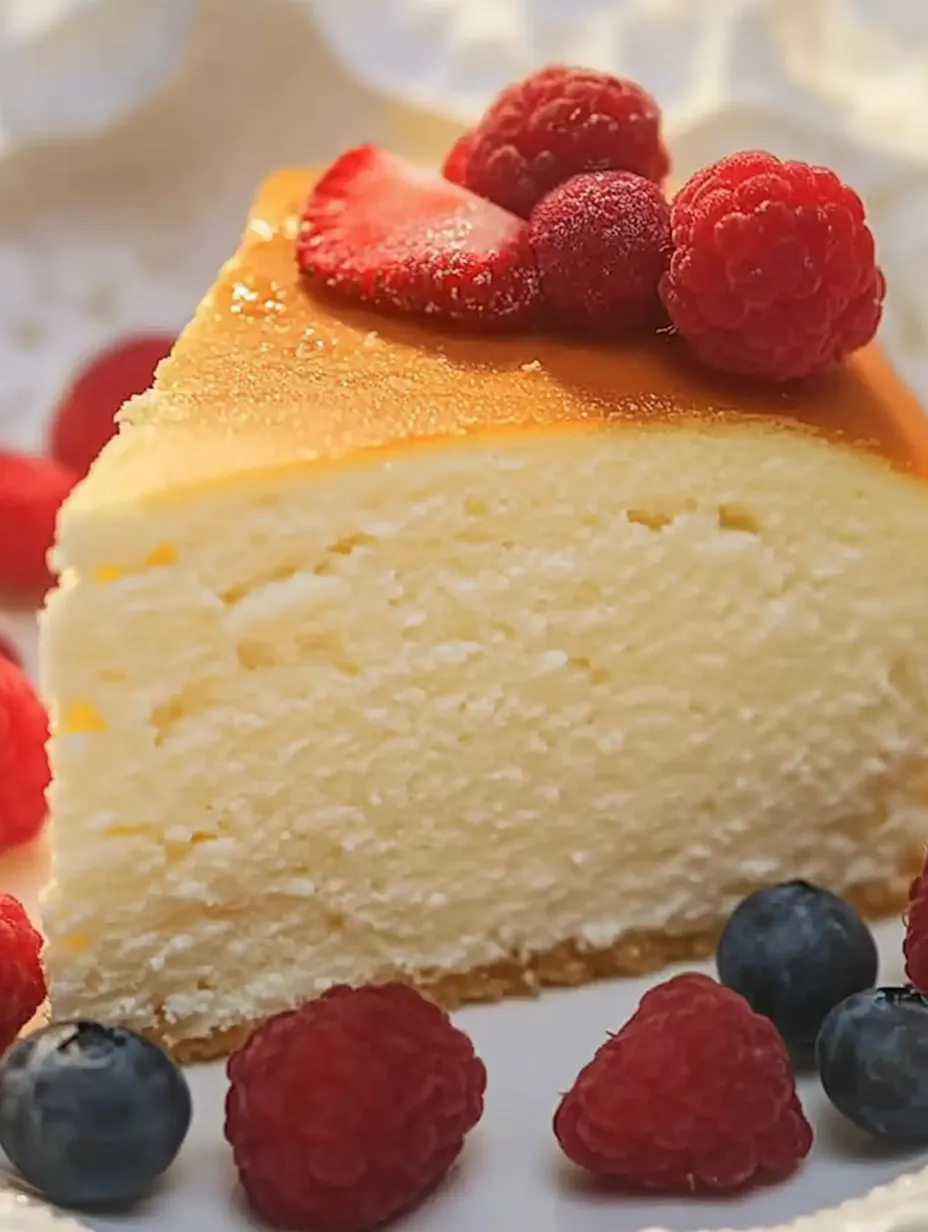 Pin it
Pin it
This fluffy Cotton Cheesecake creates the perfect harmony between light sponge cake and creamy cheesecake textures. The delicate balance of sweetness with the subtle tanginess of cream cheese makes this dessert uniquely satisfying without being overwhelming. After mastering this recipe, it quickly became my go-to impressive dessert for gatherings.
I first attempted this recipe during a weekend baking marathon, and despite the precise steps required, the final result was so magnificent that it has become my signature dessert. Friends now request this cake specifically for celebrations, which always makes me smile.
Ingredients
- Large eggs: At room temperature give the cake its signature lift and fluffiness
- Cream of tartar: Stabilizes the egg whites for maximum volume
- Cream cheese: Provides that distinctive cheesecake flavor while keeping the texture light
- Low fat milk: Adds moisture without heaviness
- Unsalted butter: Enriches the batter with subtle richness
- Lemon juice: Brightens the flavor profile with just a hint of acidity
- All purpose flour: Provides structure while keeping the cake tender
- Corn starch: Lightens the texture for that signature cottony feel
Step-by-Step Instructions
- Prepare the Pan:
- Line an 8-inch springform pan with parchment paper extending 2 inches above the rim to support the rising cake. Wrap several layers of foil around the outside to create a watertight seal. This careful preparation prevents water from seeping in during baking.
- Create Water Bath:
- Fill a large baking pan halfway with water and place on the lowest oven rack. Preheat oven to 315°F. The water bath creates steam that keeps the cake moist throughout the long baking time and helps maintain a consistent temperature.
- Whip Egg Whites:
- Beat room temperature egg whites first on low speed for 30 seconds, then medium low for another 30 seconds until foamy. Add cream of tartar, increase to medium high, and beat until just thickening. Gradually add 1/4 cup sugar while continuing to beat until soft peaks form. The egg whites provide crucial structure and that signature airy texture.
- Prepare Cheese Mixture:
- Mix cream cheese and milk on low speed for 2-3 minutes until completely smooth with no lumps. Add butter, remaining sugar, and lemon juice, beating for another minute. Incorporate flour and cornstarch, mixing for one minute more. Finally, add egg yolks and mix for a final minute. Strain the mixture through a sieve to ensure absolute smoothness.
- Combine Batters:
- Fold one third of the whipped egg whites into the cheese mixture with a gentle cutting motion until mostly incorporated. Continue adding remaining whites in two more additions, maintaining as much air as possible. This technique preserves the volume that creates the distinctive cotton texture.
- Bake the Cake:
- Pour batter into the prepared pan, smooth the top, and tap gently on counter to remove large air bubbles. Place in water bath and bake for approximately 70 minutes. Test with a toothpick, then continue baking 10-15 minutes until top is golden brown. The slow baking process allows the cake to rise properly without collapsing.
- Cool Gradually:
- Turn off oven, open door slightly, and let cake cool in oven for one hour. This slow cooling prevents dramatic temperature changes that cause excessive shrinking. The cake will still shrink about half an inch, which is completely normal.
- Chill Thoroughly:
- Remove from pan, transfer to a serving plate, and refrigerate for at least 4 hours. The cold setting time is crucial for developing the proper flavor and texture profile.
 Pin it
Pin it
This cake instantly transports me to my first visit to a Japanese bakery where I fell in love with their light, delicate approach to sweets. The way the texture somehow manages to be both substantial and airy at the same time still amazes me, even after making this recipe dozens of times.
Temperature Control Matters
The secret to a crack-free cotton cheesecake lies in temperature management. If your cake develops cracks, your oven might be running hot or the cake is positioned too close to the heating element. Position your rack in the lower third of the oven, away from the heat source. The water bath also helps regulate temperature, acting as a buffer against the direct heat that can cause rapid expansion and cracking.
Make-Ahead Magic
This cake actually improves with time in the refrigerator. While the minimum chill time is 4 hours, preparing it a day ahead allows the flavors to meld beautifully. The texture becomes more velvety, and the delicate cheese flavor develops more complexity. Store it covered in the refrigerator for up to a week, though it rarely lasts that long in my household.
Serving Suggestions
Cotton cheesecake shines when served with fresh seasonal berries that complement its delicate flavor. In summer, try it with macerated strawberries or raspberries. During colder months, a light dusting of powdered sugar and a drizzle of warm caramel sauce transforms it into a cozy treat. For an elegant presentation, serve slices with a small dollop of lightly sweetened whipped cream and a mint leaf.
Troubleshooting Tips
Even experienced bakers sometimes struggle with this recipe initially. If your cake deflates dramatically, you likely undermixed the batter or opened the oven door during baking. For a cake that sinks in the middle, the egg whites were likely overbeaten or the folding technique was too aggressive. Remember that gentle, thorough folding is essential to maintain the air structure that gives this cake its signature texture.
Frequently Asked Questions
- → What makes this cheesecake fluffy?
The fluffy texture comes from whipped egg whites folded into the batter and the use of a water bath when baking.
- → Why use a water bath for baking?
A water bath ensures even, gentle heat and keeps the cake moist throughout the baking process.
- → How do I prevent cracks on top?
Ensure the oven temperature is not too high, and place the cake away from the top heating element. A slow, even bake prevents cracks.
- → Can I use salted butter instead of unsalted?
It's best to use unsalted butter to control the overall salt content, but you can use salted butter if necessary and reduce any added salt.
- → How long should the cake cool before serving?
Let the cake cool in the oven for 1 hour, then refrigerate it for at least 4 hours to set properly before serving.
- → What can I serve with this cheesecake?
You can serve it with fresh fruit, fruit puree, whipped cream, or a drizzle of chocolate sauce for added flavor.
- → Why does the cake shrink after baking?
The cake naturally deflates as it cools because the air trapped in the batter during baking contracts when cooled.
